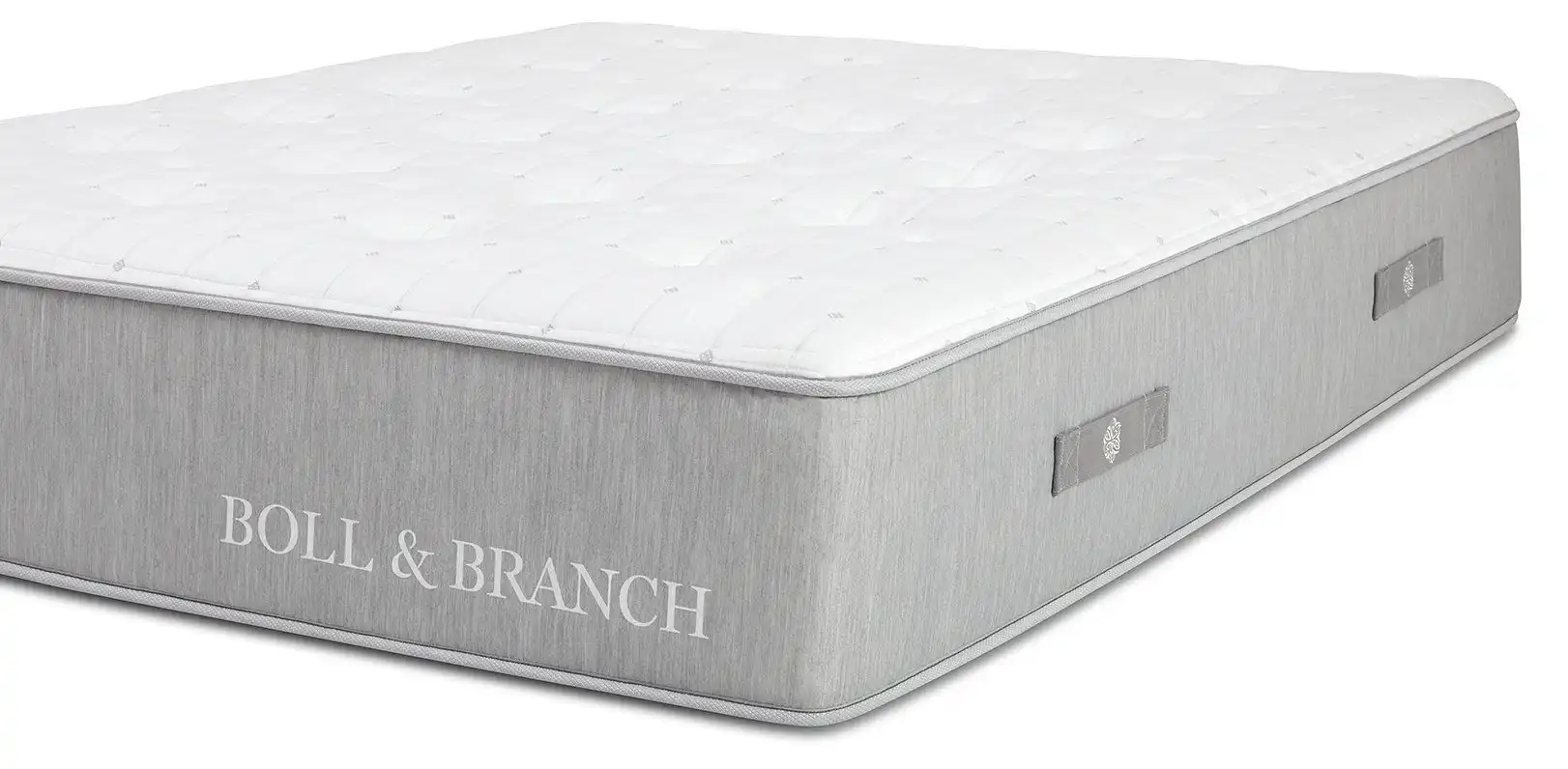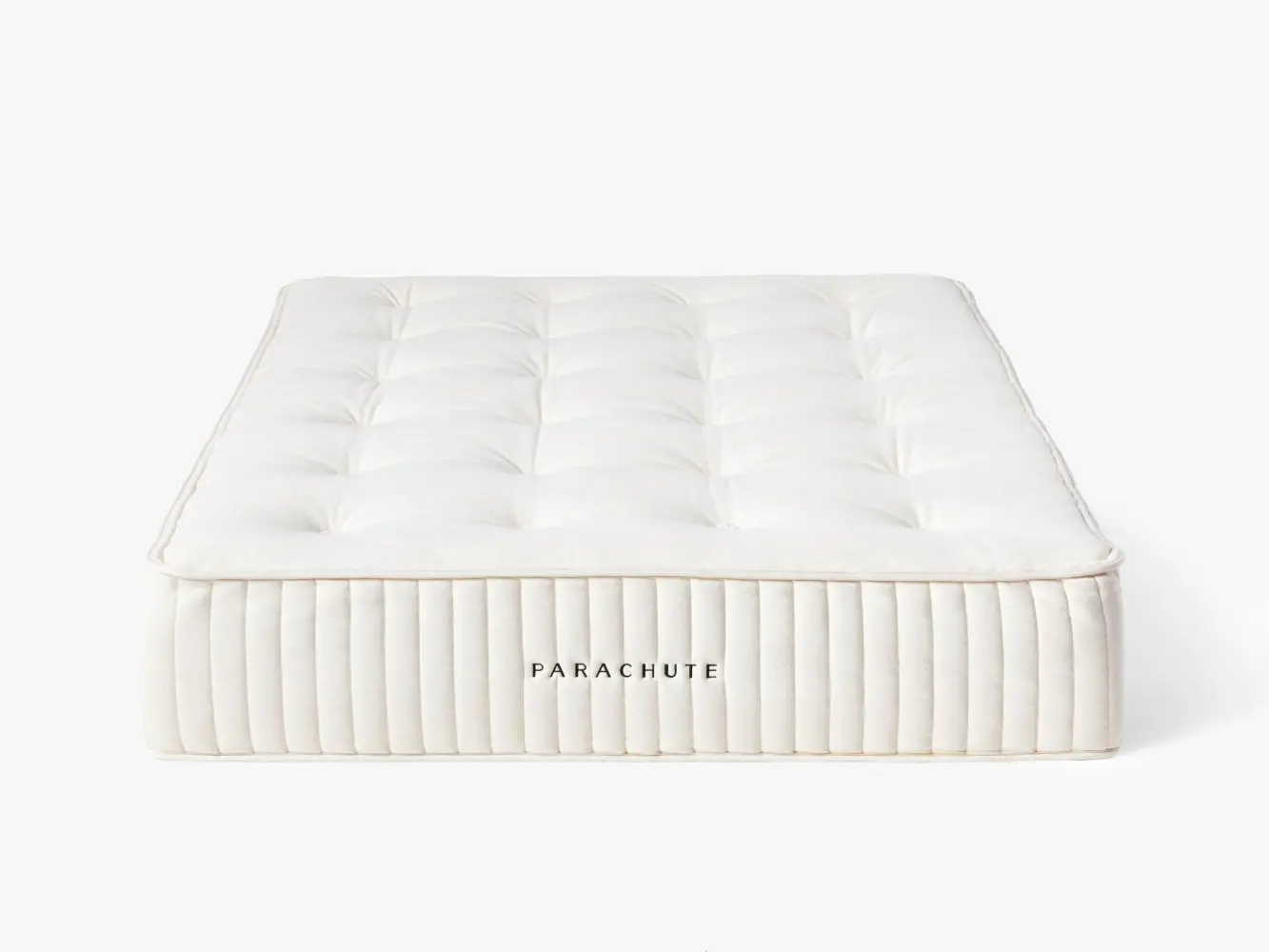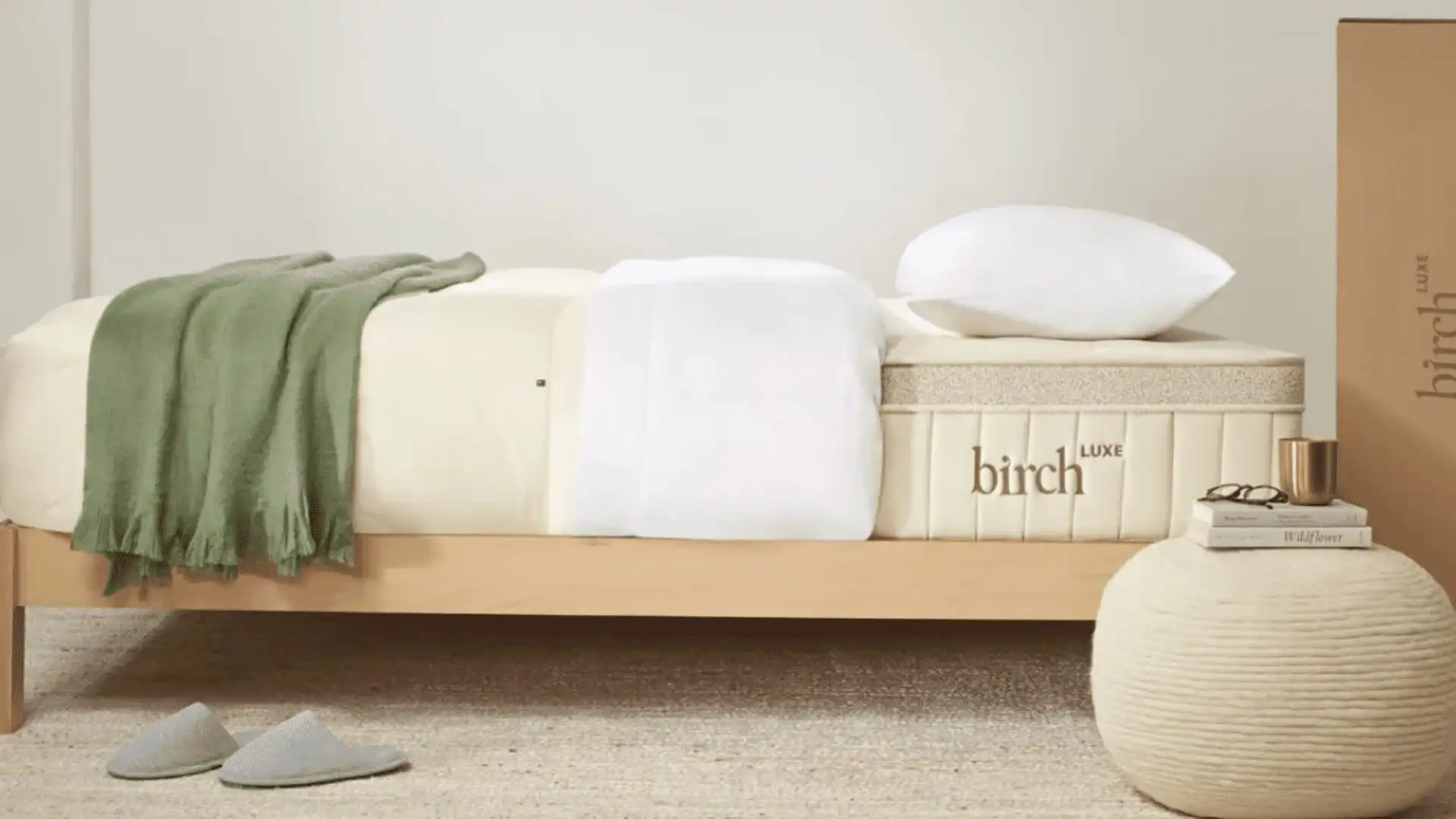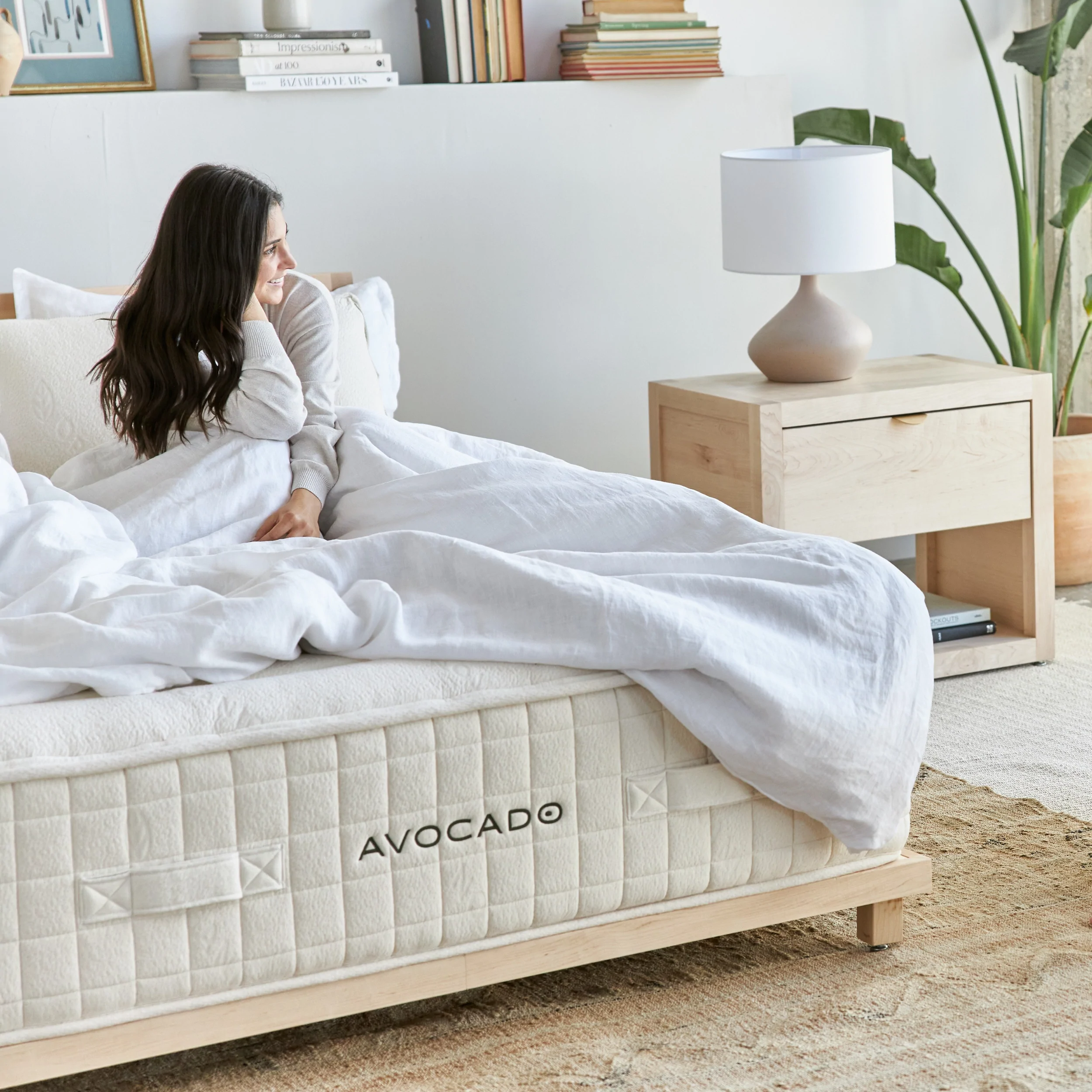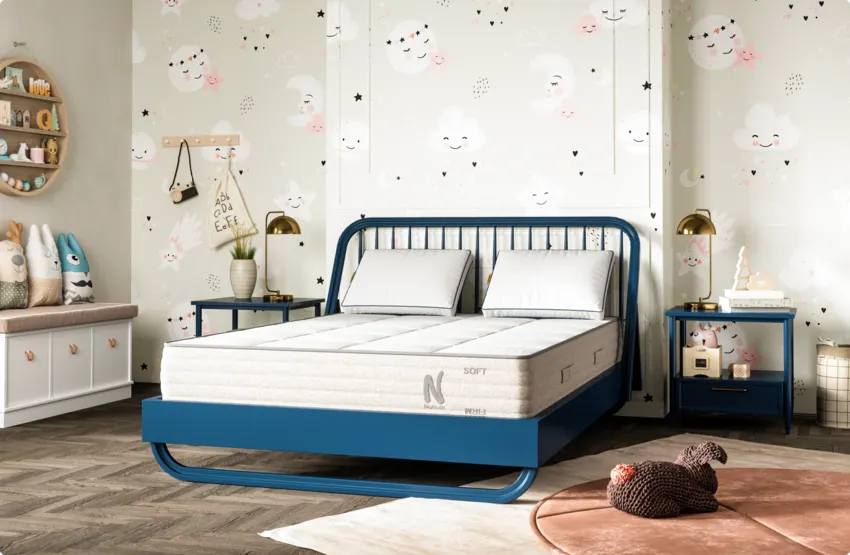Organic Mattress Reviews
Table of Contents
ToggleNatural & Organic Mattresses

Organic mattresses have become increasingly popular in recent years due to their numerous benefits. Made from natural materials such as cotton, wool, latex, and other plant-based fibers, organic mattresses offer a range of advantages over traditional mattresses.
First and foremost, organic mattresses are free from harmful chemicals commonly found in conventional mattresses. Chemical flame retardants, which are added to many traditional mattresses to comply with fire safety regulations, have been linked to a range of health problems, including cancer, reproductive and developmental disorders, and impaired neurological function. Organic mattresses are made without these chemicals, making them a safer and healthier option for consumers.
In addition to being free from harmful chemicals, organic mattresses are also more environmentally friendly than traditional mattresses. The production of conventional mattresses often involves the use of synthetic materials, which require large amounts of energy and produce significant amounts of waste. Organic mattresses, on the other hand, are made from renewable, biodegradable materials that have a smaller environmental footprint.
Organic mattresses also offer superior comfort and support compared to traditional mattresses. Natural materials such as wool and latex are highly breathable, helping to regulate body temperature and prevent overheating. They also provide excellent support and pressure relief, promoting healthy spinal alignment and reducing the risk of back pain.
Furthermore, organic mattresses are often hypoallergenic, making them an excellent choice for individuals with allergies or sensitivities. Organic materials are less likely to cause skin irritation or respiratory problems, making them a safer and more comfortable option for sensitive individuals.
What’s New with Organic Mattresses?
The natural mattress industry has experienced significant growth and innovation in recent years, driven by increasing consumer awareness of the importance of sustainable and eco-friendly products. As a result, manufacturers have been exploring new ways to improve the design, comfort, and durability of natural mattresses, while minimizing their environmental impact. Here are some key innovations in natural mattresses:
Organic materials: The use of certified organic materials, such as organic cotton, wool, and latex, has become more prevalent in the industry. These materials are grown and processed without the use of harmful chemicals, pesticides, or synthetic additives, ensuring a healthier and more eco-friendly sleep environment.
Plant-based memory foam: Traditional memory foam is made from petroleum-based polyurethane, which has raised environmental and health concerns. Innovations in plant-based memory foam have led to the development of bio-based foams, which replace a portion of the petroleum with renewable plant oils. These foams offer the same contouring and pressure-relief benefits as traditional memory foam, while reducing their environmental impact.
Customizable comfort: Some natural mattress manufacturers are now offering customizable comfort options, allowing customers to choose the firmness and support levels that best suit their individual needs. This can involve selecting different layers or zones of natural latex or other materials to create a personalized sleep experience.
Zoned support: Natural mattress manufacturers have also been exploring the concept of zoned support, in which different areas of the mattress offer varying levels of firmness and support. This can help to provide targeted pressure relief for specific areas of the body, such as the shoulders and hips, resulting in improved spinal alignment and overall comfort.
Eco-friendly certifications: The growing importance of sustainability and eco-friendliness has led to an increase in third-party certifications for natural mattresses. These certifications, such as GOTS (Global Organic Textile Standard) and GOLS (Global Organic Latex Standard), ensure that the mattresses meet strict environmental and social criteria, providing consumers with greater confidence in the sustainability and ethical practices of the manufacturers.
Greener production processes: Many natural mattress manufacturers are adopting greener production methods, such as water-based adhesives, reduced energy consumption, and waste reduction initiatives, to further minimize their environmental impact.
These innovations in natural mattresses demonstrate the industry’s commitment to providing consumers with healthier, more comfortable, and environmentally responsible sleep solutions. As the market continues to evolve, we can expect to see further advancements in materials, design, and sustainability practices that will contribute to a better sleep experience and a more sustainable future.
Our Top Picks for Natural Mattresses
|
||
|
||
|
A natural mattress or organic mattress is a graet choice if you have chemical sensitivities or just want a mattress that is made of sustainable material that is good for the earth, there are now many options available. What you will primarily find is latex or spring and latex mattresses in the natural and organic mattress category. Latex rubber has good pressure relief properties and also offers more bounce than memory foam. Latex usually breathes better than memory foam as well because there are tiny holes in it which is part of the manufacturing process.
Natural mattresses shouldn’t have to cost an arm and a leg. Companies like My Green Mattress and Nest Bedding have some great options at a good price point. If you are in the market for an all latex mattress, I highly recommend Zen Haven largely because they have a free trial period. Something that is hard to find among all natural latex brands.
I don’t think Organic mattress is a proper way to label these mattresses since there is at some point some level of processed material in the mattresses I have reviewed. For instance, the steel springs must be manufactured as well as the zipper for the cover. That said, they are much more environmentally friendly than memory foam mattresses.
All Natural Mattresses
|
||
|
||
|
||
|
||
|
||
|
||
|
||
|
||
|
||
|
||
|
||
|
||
|
||
|
||
|
||
|
||
|
ILD and Latex Explained
ILD ratings, short for Indentation Load Deflection, work with latex by measuring the force (in pounds) required to compress a 25% of the original thickness of a latex sample. Higher ILD numbers indicate a firmer latex, while lower numbers signify a softer one.
Here’s a breakdown of how ILD translates to firmness in latex:
- Low ILD (12-25): Very soft, plush foam that contours closely to the body. Ideal for side sleepers seeking pressure relief.
- Medium ILD (26-35): Medium-soft to medium-firm, offering more support than lower ILDs but still providing comfort. Suitable for a wider range of sleepers.
- High ILD (36-45): Firm latex that offers good pushback and support. Best for back and stomach sleepers or those who prefer a less conforming feel.
- Extra Firm ILD (46+): Very firm, providing minimal sink and excellent support. Often used for heavy individuals or in combination with softer layers for progressive support.
However, it’s important to note that ILD isn’t the only factor determining latex firmness. Other factors like density (mass per unit volume) and sap content (natural rubber content) also play a role. Latex with higher density and sap content tends to be firmer than those with lower values.
Here are some additional points to keep in mind:
- ILD ratings can vary slightly between manufacturers due to different testing methods or standards.
- Some companies use proprietary firmness descriptions alongside ILD numbers for easier understanding.
- ILD alone doesn’t tell the whole story about latex comfort. Consider factors like support, bounce, and breathability when making a choice.
Ultimately, the best way to determine the ideal ILD rating for you is to try out different latex mattresses or toppers to find the firmness that best suits your sleep preferences and body type.
What is Organic Latex?
There are two main certifications used for organic latex:
1. Global Organic Latex Standard (GOLS):
- Considered the gold standard for organic latex certification.
- Ensures latex comes from trees grown for at least 4 years without synthetic pesticides or fertilizers.
- Requires strict processing standards with no harmful chemicals or additives.
- Certified by independent third-party organizations.
- Look for the GOLS logo on product labels.
2. Organic Content Standard (OCS):
- Less stringent than GOLS.
- Allows for up to 5% non-organic materials to be included in the final product.
- Often used for blends of organic and non-organic latex.
- Certified by independent third-party organizations.
- Look for the OCS logo on product labels.
Additional aspects of organic latex certification:
- Fair labor practices: Some certifications, like GOTS, also consider ethical labor practices during production.
- Traceability: Certified latex can be traced back to the farm where the rubber tree was grown.
- Sustainability: Organic latex farming promotes soil health and biodiversity.
When choosing organic latex, it’s important to:
- Look for the GOLS or a comparable certification that meets your standards.
- Ask the manufacturer about their specific certification and organic practices.
- Be aware that “natural latex” does not automatically mean organic.
- Consider your budget and needs when choosing between different latex options.
Latex vs. Foam Which Lasts Longer?
Latex tends to last longer than foam, particularly memory foam, but it depends on several factors:
Type of foam:
- Memory foam: Memory foam typically lasts around 7-10 years before showing signs of wear and tear, like sagging or indentations.
- Polyurethane foam: Lower-quality foams can deteriorate even faster, lasting only 5-7 years.
- High-density latex foam: Can last significantly longer, up to 15-20 years with proper care, due to its natural elasticity and resistance to compression.
Quality of materials:
- Higher-quality latex and foam, regardless of type, will generally last longer than cheaper alternatives.
- Look for mattresses with certifications like GOLS (organic latex) or CertiPUR-US (safe foams) for better quality assurance.
Usage and care:
- Proper care significantly impacts longevity. Regularly rotating and flipping your mattress, using a protector, and maintaining a suitable temperature and humidity level can extend its lifespan.
- Excessive weight or stress on the mattress can accelerate wear and tear for any material.
Here’s a table summarizing the expected lifespan of different materials:
| Material | Lifespan |
|---|---|
| High-density latex foam | 15-20 years |
| Memory foam | 7-10 years |
| Polyurethane foam | 5-7 years |
Additional factors to consider:
- Your sleeping style and preferences: Latex offers more bounce and contouring, while foam excels at pressure relief and sink. Choose the material that best suits your needs.
- Budget: Latex mattresses are generally more expensive than foam.
Latex Off Gassing
Latex can emit a slight odor when it’s new, but it’s generally considered less prone to off-gasing compared to some synthetic foams. Here’s what you need to know:
Potential for off-gasing:
- Latex, a natural material, might release minimal organic compounds, primarily terpenes, which give it a rubbery smell. These are typically harmless and fade within a few days to a week with proper ventilation.
- While not as common as with synthetic foams, some latex blends or mattresses treated with certain chemicals might have more noticeable off-gasing.
Minimizing off-gasing:
- Choose naturally processed, GOLS-certified organic latex for minimal chemical exposure.
- Opt for mattresses made with Dunlop latex, known for its open cell structure that allows for better airflow and odor dissipation.
- Ensure proper ventilation in your bedroom by opening windows or using fans, especially during the first few days after getting a new latex mattress.
Safety considerations:
- The off-gasing from latex is generally considered minimal and unlikely to pose health risks for most people.
- However, if you have any breathing sensitivities or concerns, it’s best to consult with a doctor before purchasing a latex mattress.
Additionally:
- Look for certifications like OEKO-TEX Standard 100 or CertiPUR-US, which indicate low levels of volatile organic compounds (VOCs).
- Consider purchasing from brands known for their commitment to sustainability and organic practices.
Remember, proper ventilation and choosing responsible and certified materials can significantly reduce any potential concerns about off-gasing from latex. Feel free to ask if you have any further questions about latex mattresses or off-gasing!

Why Natural Mattresses Are Becoming So Popular
There are several factors driving the increasing popularity of natural mattresses:
Health and wellness:
- Chemical concerns: People are increasingly conscious of potential health risks associated with synthetic materials in mattresses, like flame retardants or VOCs (volatile organic compounds) emitted from foams. Natural materials like latex, wool, and cotton are perceived as safer alternatives.
- Allergy & Asthma Relief: Natural materials can be less likely to trigger allergies or asthma compared to some synthetic fibers, creating a better sleep environment for sensitive individuals.
- Improved sleep quality: Some studies suggest natural mattresses may promote better sleep due to factors like breathability, temperature regulation, and pressure relief.
Environmental concerns:
- Sustainability: Natural materials are often renewable and biodegradable, reducing environmental impact compared to petroleum-based synthetics. Consumers are increasingly seeking eco-friendly products.
- Ethical sourcing: Many natural mattress brands emphasize responsible sourcing of materials, ensuring fair labor practices and animal welfare.
Comfort and performance:
- Durability: Natural materials like latex can often be more durable than some synthetic foams, lasting longer before showing signs of wear and tear.
- Comfort and support: Natural materials offer unique comfort characteristics. Latex provides bounce and responsiveness, while wool offers excellent temperature regulation and pressure relief.
Marketing and accessibility:
- Increased awareness: Growing media coverage and marketing campaigns highlighting the benefits of natural mattresses have increased general awareness and interest.
- Wider availability: More brands are offering natural mattress options, making them more accessible and competitive in price compared to the past.

Vegan Mattresses
Vegan mattresses are a growing trend in the sleep industry, catering to individuals seeking cruelty-free and eco-conscious bedding options. They exclude all animal products, focusing on plant-based and synthetic materials for a comfortable and ethical sleep experience.
Here’s a deeper dive into vegan mattresses:
What makes a mattress vegan?
- No animal products: This means eliminating wool, down feathers, and any other materials derived from animals.
- Plant-based alternatives: Vegan mattresses typically use organic latex, cotton, and other plant-based materials for comfort and support.
- Synthetic options: Some vegan mattresses may utilize high-quality, non-toxic synthetic materials like bio-foams or recycled polyester.
Benefits of vegan mattresses:
- Cruelty-free: Aligns with vegan values by avoiding animal exploitation.
- Eco-friendly: Often made with sustainable and renewable materials, reducing environmental impact.
- Hypoallergenic: Plant-based materials can be less likely to trigger allergies compared to some animal products.
- Performance: Vegan mattresses can offer excellent comfort, support, and durability.
Popular vegan mattress brands:
- Avocado Green Mattress: Certified organic and vegan mattresses with GOLS-certified latex and organic cotton.
- PlushBeds: Offers a variety of latex mattresses, including hybrid and all-latex options, all vegan-friendly.
- Naturepedic: Vegan and organic mattress brand with customizable options and GOTS and GOLS certifications.
- Brentwood Home: Crystal Cove mattress features cooling charcoal-infused memory foam and organic Dunlop latex, PETA-approved vegan.
- Nest Bedding: Offers vegan versions of some of their popular mattress models, using organic cotton and plant-based foams.
Things to consider when choosing a vegan mattress:
- Comfort and support: Try out different mattresses in person or order ones with generous trial periods to find the right fit for your sleep needs.
- Materials: Research the specific materials used and their certifications to ensure quality and sustainability.
- Price: Vegan mattresses can range in price, so set a budget and compare options before making a purchase.
- Reviews: Read reviews from other vegan mattress users to get their insights and experiences.
Conclusion:
Vegan mattresses offer a comfortable, ethical, and environmentally friendly sleep solution for those seeking an animal-free lifestyle. With various brands and materials available, finding the perfect vegan mattress that meets your needs and preferences is possible. Remember to research, compare, and choose a mattress that will help you rest easy, knowing you’re making a conscious and sustainable choice.
Leave a Comment Cancel reply
This site uses Akismet to reduce spam. Learn how your comment data is processed.
-
Sale!
 $2,061.00 – $3,374.00
$2,061.00 – $3,374.00 -
Sale!
 $584.00 – $764.00
$584.00 – $764.00 -
Sale!
 $1,979.00 – $3,958.00
$1,979.00 – $3,958.00









